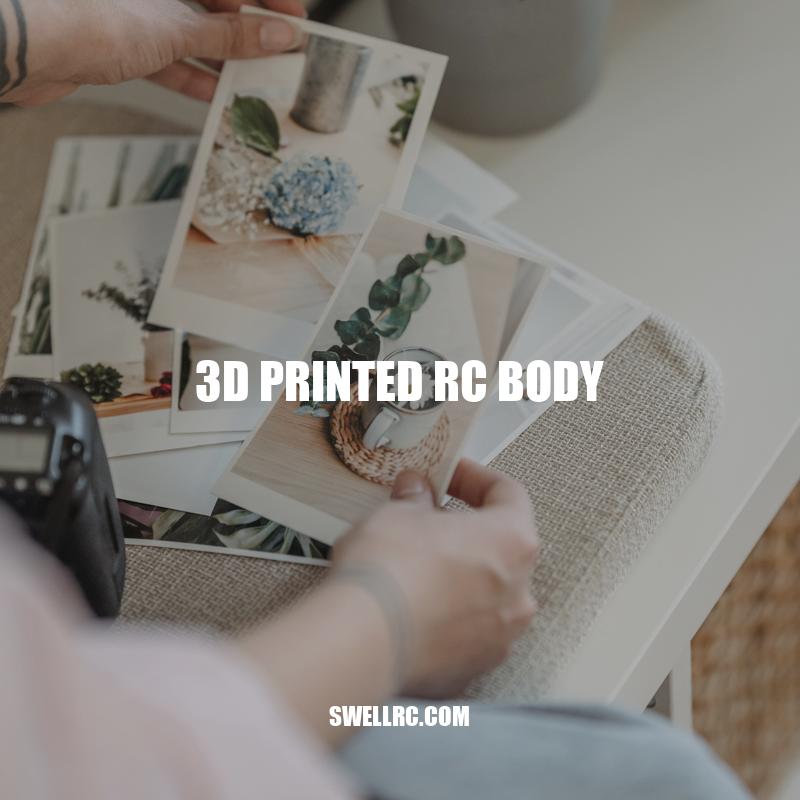Revolutionizing RC Racing: The Advantages and Design Considerations of 3D Printed RC Bodies
In recent years, the use of 3D printing technology in the RC hobbyist community has become increasingly popular. With the ability to easily customize designs and produce parts quickly and cost-effectively, 3D printing offers a level of flexibility and versatility that was previously unavailable. One of the most exciting applications of 3D printing in this space is the creation of RC bodies. A well-designed RC body can dramatically improve the performance and appearance of an RC vehicle, and with 3D printing, hobbyists have new freedom to experiment with different shapes, designs and materials. In this article, we will explore the advantages and challenges of 3D printed RC bodies, as well as important design considerations and testing strategies to ensure optimal performance on the track. Whether you are a seasoned RC enthusiast or just getting started, this guide will provide valuable insights into the world of 3D printed RC bodies.
Advantages of 3D Printed RC Bodies
There are several advantages to using 3D printing technology to produce RC bodies:
- Customization: with 3D printing, hobbyists have the ability to create unique designs and tailor the body to specific needs.
- Flexibility: Changes can be made quickly and easily to the design to improve performance or accommodate new parts.
- Cost-effective: 3D printing is often cheaper than traditional manufacturing methods, making it an accessible option for hobbyists on a budget.
- Time-efficient: 3D printing can produce parts quickly, making it an excellent option for those who want to experiment with different designs and materials.
These advantages have made 3D printed RC bodies increasingly popular and accessible to hobbyists around the world. Some recommended websites for designs and inspiration include Thingiverse, Shapeways, and Cults3D. Additionally, several RC manufacturers have started offering 3D-printed body alternatives, demonstrating that the technology is rapidly becoming a mainstream option for customizing RC vehicles.
Can I 3D print RC car parts?
Yes, you can 3D print RC car parts. 3D printing is a great way to produce custom and unique parts that may not be available on the market. It also allows for easy iteration and modification of parts as needed. There are many websites that offer 3D printing services, such as Shapeways and Sculpteo. Additionally, there are also specific 3D printable RC car designs available for download on sites like Thingiverse. However, it is important to keep in mind that 3D printing may not always be suitable for all types of RC car parts, as they need to withstand high levels of stress and impact. It is recommended to use strong and durable materials such as nylon or carbon fiber for 3D printing RC car parts.
Materials Used in 3D Printed RC Bodies
There are several materials that can be used to print RC bodies with 3D printing technology. Here are some commonly used materials:
| Material Type | Advantages | Disadvantages |
|---|---|---|
| ABS (Acrylonitrile Butadiene Styrene) | Durable, flexible, and resistant to impact and heat | Prone to warping and requires a heated build platform |
| PLA (Polylactic Acid) | Biodegradable, easy to print, and available in various colors | Can be brittle and may not hold up well to extreme temperatures |
| PETG (Polyethylene Terephthalate Glycol) | Durable, flexible, and resistant to impact and temperature | More difficult to print than other materials and may require a specialized nozzle |
It’s important to consider the pros and cons of each material before deciding which to use for your RC body. However, one advantage of 3D printing is the ability to experiment with different materials to find the right fit for your needs. Some recommended websites for ordering 3D printing materials include MakerBot, Amazon, and Matterhackers. Additionally, it’s important to note that not all 3D printers can handle all materials, so be sure to check the specifications of your printer before making a purchase.
What material is used to 3D print body parts?
The material used to 3D print body parts varies depending on the specific body part being printed. Here are some common materials:
| Body Part | Material |
|---|---|
| Bones and Teeth | Polycarbonate-based resins, ABS, nylon, or titanium alloys |
| Skin | Alginate, collagen, fibrin, or hyaluronic acid |
| Cartilage | Polycaprolactone, PLA, chitosan, or gelatin |
| Organs | Hydrogels, collagen, poly(lactic-co-glycolic acid) (PLGA), or decellularized extracellular matrix (dECM) |
It is important to note that 3D printed body parts are still in the experimental stage and are not yet widely available for clinical use. However, research and development in the field continue to progress and show promising results. Some companies, such as Organovo and BioBots, specialize in 3D bioprinting and are actively working on advancing the technology.
Design Considerations for 3D Printed RC Bodies
Designing a successful 3D printed RC body requires careful attention to several key factors. Here are some things to keep in mind:
- Weight and balance are critical considerations, as these factors affect the vehicle’s overall performance and stability.
- Aerodynamic design is also crucial, especially for high-speed vehicles where wind resistance can affect top speed and handling.
- Using software tools such as CAD (Computer Aided Design) or 3D modeling software can help you create a precise design that meets your needs and specifications.
- It’s important to consider the fit of the body on the RC vehicle frame, ensuring a secure fit and avoiding any interference with moving parts.
In addition to these design considerations, you may also want to consider using existing 3D models or templates to create your RC body. Websites like Thingiverse and GrabCAD offer a wide range of templates, designs, and resources to help you create a perfect RC body. Furthermore, if you’re not confident in your design skills, you can hire a professional designer or outsource your design work to a company specializing in 3D printing for RC vehicles.
How do you reinforce a RC car body?
In order to reinforce your RC car body, here are some tips:
- Use thicker lexan material for the body.
- Apply epoxy or shoe goo to vulnerable areas and let it dry overnight.
- Make use of body mounts and shock towers.
- Consider adding a roll cage for extra protection.
There are various products available in the market that can help you with reinforcing your RC car body, such as reinforced lexan sheets and roll cages. Websites like Amazon and eBay have a variety of options available.
Testing and Adjusting 3D Printed RC Bodies
Testing and adjusting your 3D printed RC body is a crucial step in ensuring its success. Here are some tips to help you refine your design:
- Begin testing as early in the design process as possible, as this allows you to identify and address any issues early on.
- Measure and record performance metrics, such as top speed, acceleration, and handling, to help you track your progress and identify areas for improvement.
- Make adjustments to the design as needed based on test results, focusing on factors such as weight distribution, aerodynamics, and vehicle fit.
- Consider using simulation tools and software to help you refine your design before printing a physical prototype, as this can save time and resources.
Another key consideration when testing and adjusting your 3D printed RC body is the choice of materials. Some materials may be more suitable for testing than others, depending on factors such as durability, flexibility, and weight. Websites like Shapeways and Sculpteo offer a range of materials suitable for 3D printing RC bodies, including ABS, PLA, nylon, and TPU. You can also experiment with different infill percentages and layer heights to achieve different levels of strength and flexibility in your RC body design.
How can I strengthen my RC car body?
There are a few ways to strengthen your RC car body:
- Upgrade to a thicker polycarbonate body shell. Some popular brands include Proline, JConcepts and Traxxas.
- Apply a protective film or tape to the body to prevent scratches and damage.
- Add reinforcement with bracing, such as roll bar or shock tower braces. These can be found on websites such as RC Planet or AMain Hobbies.
It’s important to also consider the weight of your RC car when adding these upgrades, as they can affect performance. Be sure to choose the right products for your specific RC car model.
Conclusion and Future of 3D Printed RC Bodies
In conclusion, 3D printing offers a range of advantages for designing and producing RC bodies, including customization options, cost savings, and quick turnaround times. However, designing and refining a successful 3D printed RC body can be a complex process that requires careful consideration of factors such as materials, design, and testing. With the right skills and resources, however, hobbyists and enthusiasts alike can use 3D printing technology to create unique and high-performance RC bodies that rival those produced through traditional manufacturing methods.
Looking to the future, the potential of 3D printing in the RC hobbyist community is vast. As the technology becomes more accessible and affordable, we can expect to see increasingly sophisticated and innovative designs, as well as new materials that enable even greater levels of customization and performance. Additionally, the rise of online 3D printing marketplaces and communities has made it easier than ever for hobbyists to access a wealth of resources and expertise, further fueling the growth and development of 3D printed RC bodies. So, if you’re an RC enthusiast looking to take your hobby to the next level, 3D printing may be just the tool you need to unleash your creativity and achieve great things.



